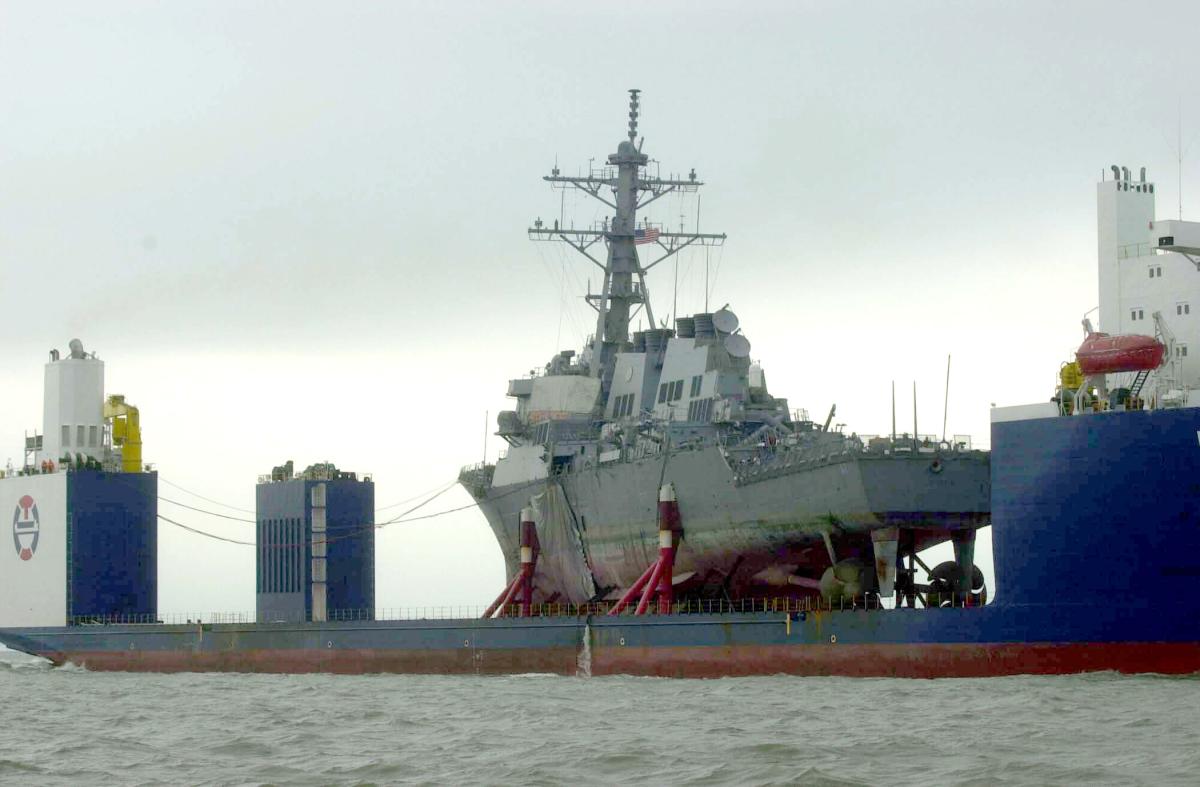On 13 October 2000, the destroyer USS Cole (DDG-67), at anchor while refueling in Yemen's Aden harbor, was crippled by a powerful explosive carried on a small boat that was placed alongside the ship by a suicide team. The next day, The Washington Post quoted U.S. Navy officers as saying that there was virtually no way to protect the ship from such an attack. Secretary of Defense Cohen said, "Given the nature of this particular situation" it would have been "very difficult if not impossible to protect against this type of incident."
In the ensuing weeks, a significant item of discussion was the nature of the warning that was issued to the skipper of the Cole as he prepared to enter the harbor to refuel. The warning, if any, was, in the strictest sense, immaterial. As commander of a U.S. Navy ship, he was responsible for the well-being of his ship and her crew, regardless of the warnings he received.
Commanding Army forces, I long ago developed certain convictions about how commanders should view their responsibilities for the preparedness of their commands in time of war or tension. I believe these principles apply to ships and naval commands as well, and that they apply to the Cole.
- No matter what a commander is told by others, he is responsible for his own risk estimate.
- A commander has only one chance to avoid being surprised. If he is surprised and his command suffers, he has missed that chance and failed.
- A commander must be a warrior, but he must also be a worrier. He always must be thinking of what the enemy can do, and take precautions.
As he approached the Aden harbor, the Cole's skipper should have asked himself, "What are the ways that my ship can be damaged in that harbor, and what can I do to thwart the enemy?" A reasonable and prudent commander would have visualized the possibility—especially in Aden—of a small boat attack. It would not take much imagination, only a certain frame of mind with respect to his responsibility for his ship.
Upon anchoring at Aden, a commander who was a worrier as well as a warrior would have put small boats in the water with armed parties aboard. The officer or petty officer in charge of each party would have been ordered to stop and inspect every boat that ventured within 50 meters of the ship. Boats that refused to obey, of course, would be fired on.
Does this sound extreme? According to a one-time U.S. Navy destroyer skipper, a contemporary of mine living in Annapolis, who took his Fletcher (DD-445)-class destroyer into Aden many times in the 1960s, that is exactly what he did with his one motor whaleboat. Motor whaleboats left the Navy in the 1990s, but the Cole had two high-powered, 24-foot rigid inflatable boats that could well have been used.
It is a matter of attitude. A Naval Academy midshipman has told me of his cruise aboard a submarine last summer. Whenever that submarine surfaced, her commanding officer (a former Marine staff sergeant) mustered crew members on deck armed with shotguns and other small arms in an alert posture prepared for any contingency that could threaten his submarine. A worrier as well as a warrior, this submarine's skipper recognized that he had only one chance to avoid being surprised.
From the Uniform Code of Military Justice (UCMJ), Article 110, Improper Hazarding of a Vessel: "(b) Any person subject to this chapter who negligently hazards or suffers to be hazarded any vessel of the armed forces shall be punished as a court-martial may direct." The UCMJ defines "negligence" as: "The failure to exercise the care, prudence, or attention to duties which the interests of the government require to be exercised by a prudent and reasonable person under the circumstances."
Circumstances should not obscure the fundamental meaning of the UCMJ.
Service hierarchies, take heed.



